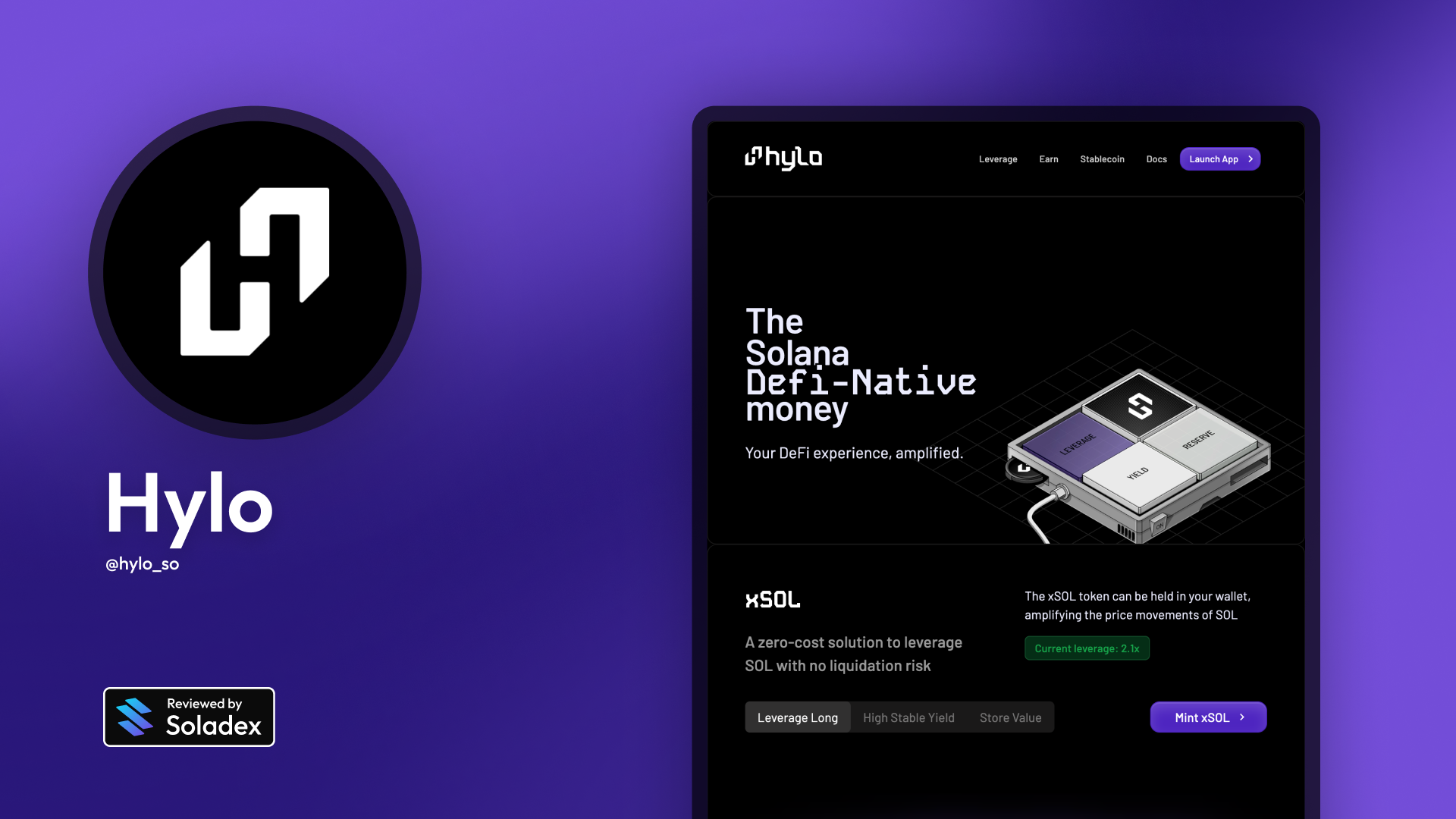What is Hylo?
Hylo is a decentralized finance built on Solana, designed without reliance on traditional finance or centralized institutions. Hylo introduces a dual-token system: hyUSD, a stablecoin backed by yield-bearing liquid staking tokens (LSTs), and xSOL, a leveraged long position on SOL. These tokens operate without oracles, liquidation risk, or funding rates.
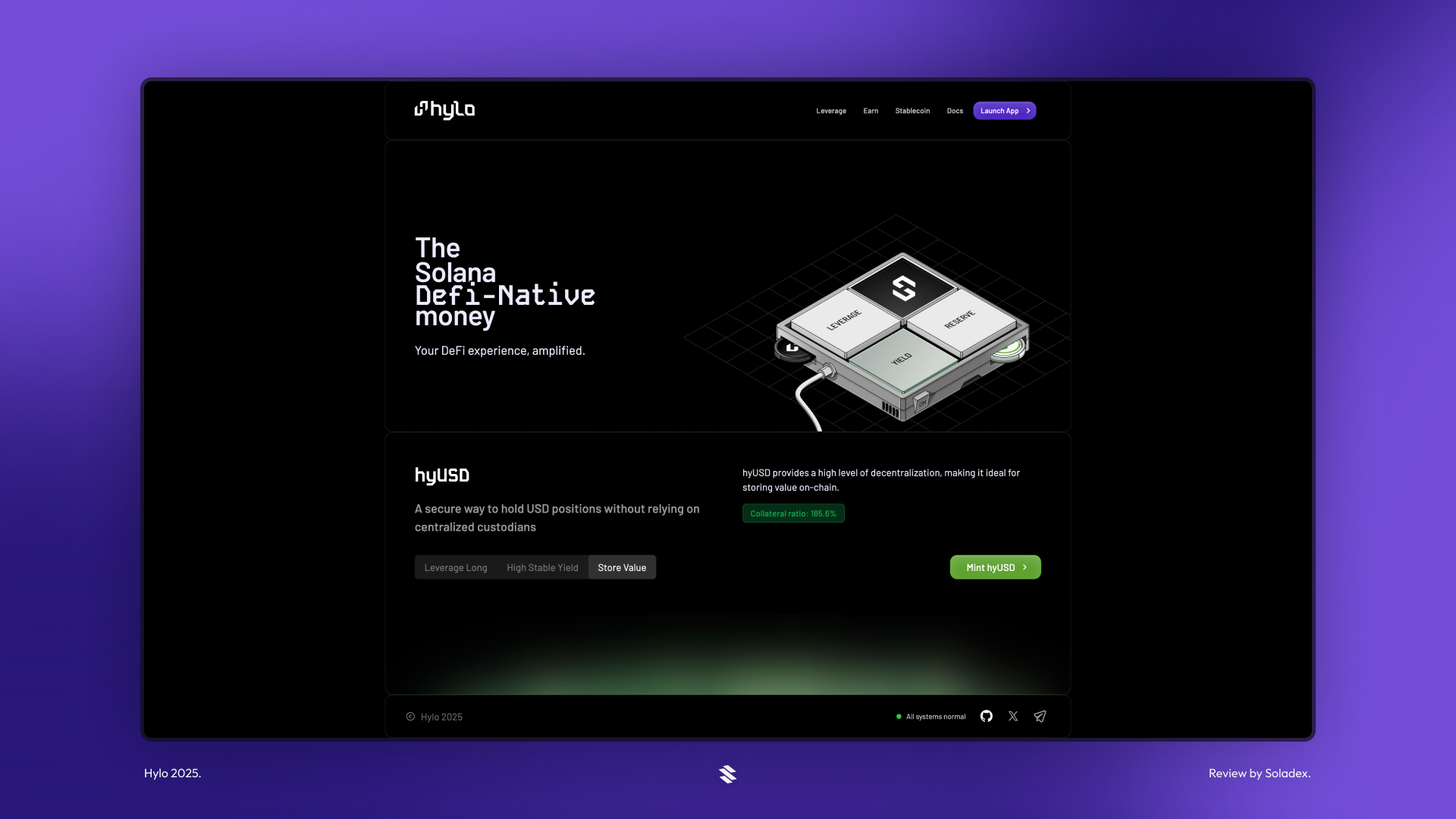
How Does It Work?
hyUSD: The hyUSD token is always pegged 1:1 to USD. It is backed by LSTs in a collateral pool. The value equation ensures the protocol remains delta-neutral:
Collateral TVL = hyUSD supply × $1 + xSOL market value.
xSOL: This token absorbs SOL’s volatility and offers leveraged exposure without liquidation risk or recurring funding fees. As SOL’s price fluctuates, xSOL adjusts automatically while shielding hyUSD’s peg.

The page above pops up after connecting your wallet for you to select the product you are interested in. You can select any of the options if you are not sure of the exact product you want to use. The application’s main page has buttons that lead to these products in case you change your mind.
Double-Digit Yield
sHYUSD is the staked form of hyUSD that users place in the stability pool. It earns returns from the assets that support the protocol. Most of the time, sHYUSD keeps a steady value, but it can move up or down when the stability pool is used during times of market stress.
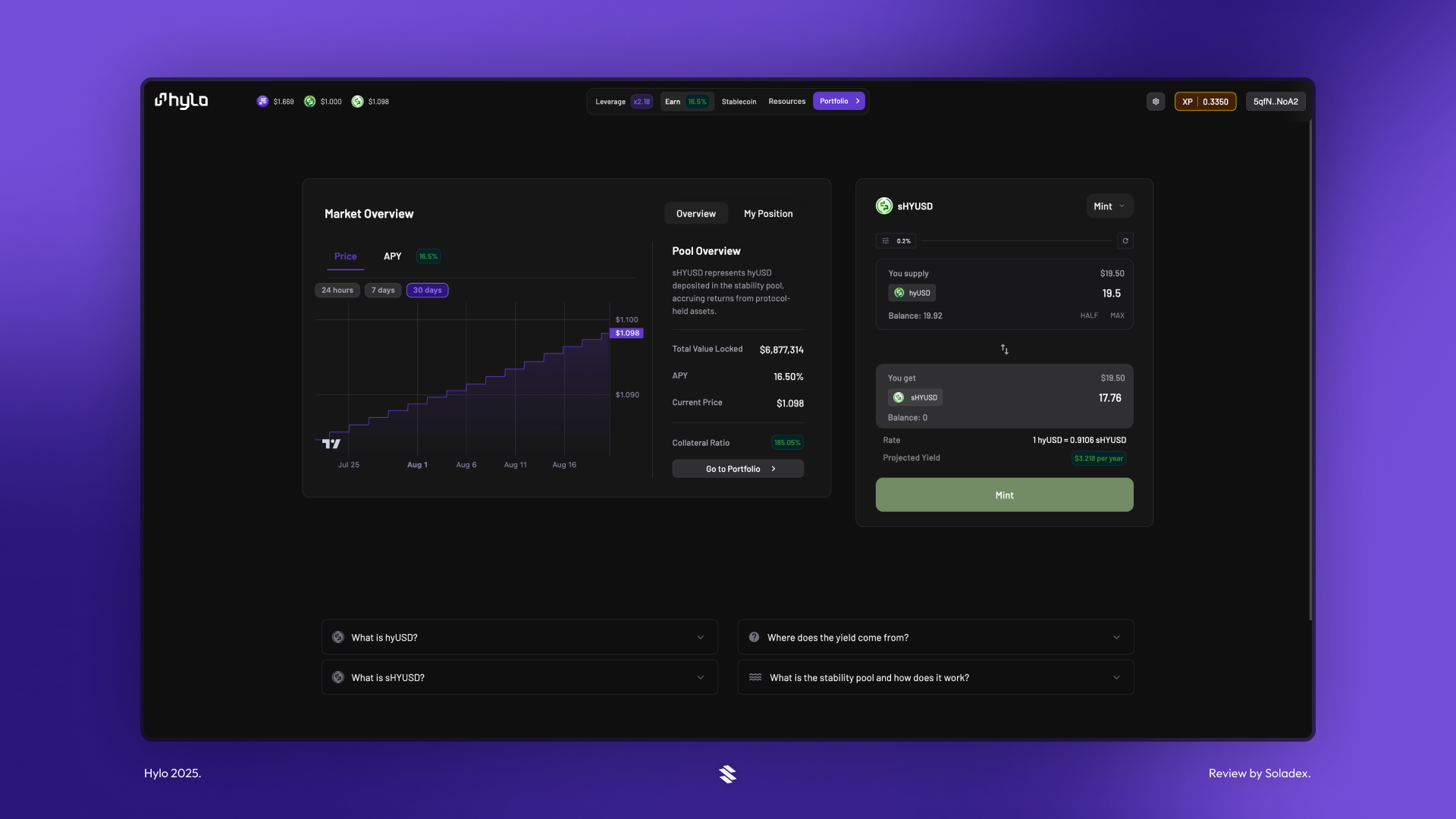
Leveraged Long
Leverage in xSOL comes from how the SOL backing hyUSD absorbs price changes. When SOL’s price goes up or down, the system automatically shifts value so that xSOL reflects those movements more strongly. This gives xSOL extra exposure to price swings without relying on borrowing or facing liquidation risk.
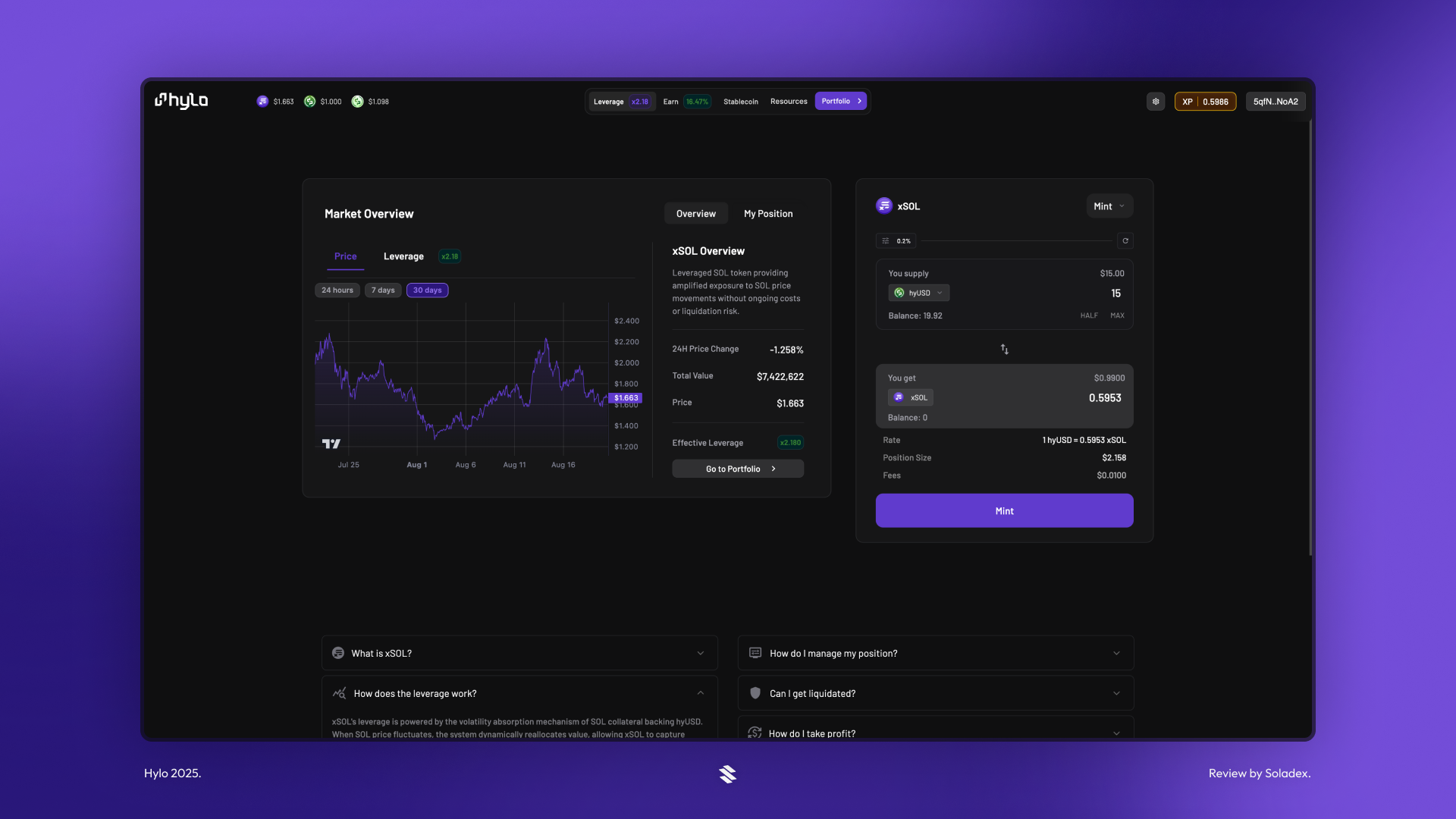
Store Value
hyUSD is a decentralized stablecoin built on Solana that is designed to maintain a 1:1 peg with the US Dollar. Unlike traditional stablecoins, its backing comes from liquid staking tokens (LSTs), which are staked assets that continue to generate yield while serving as collateral. This structure ensures that hyUSD is not only stable but also supported by productive on-chain assets. Holders can redeem hyUSD at face value directly at any time. In addition, the reserve that backs the stablecoin is fully transparent and auditable on-chain, allowing users to independently verify its security and stability at all times.
Minting the Hylo Stablecoin
To mint hyUSD, navigate to the Stablecoin section and select “Mint” from the drop-down menu located at the top of the box shown below. Supply the token available to get the equivalent in hyUSD. In the image below, 20 USDC was supplied for 19.92 hyUSD. You can also use this same page to redeem the token used to mint the Hylo stablecoin.
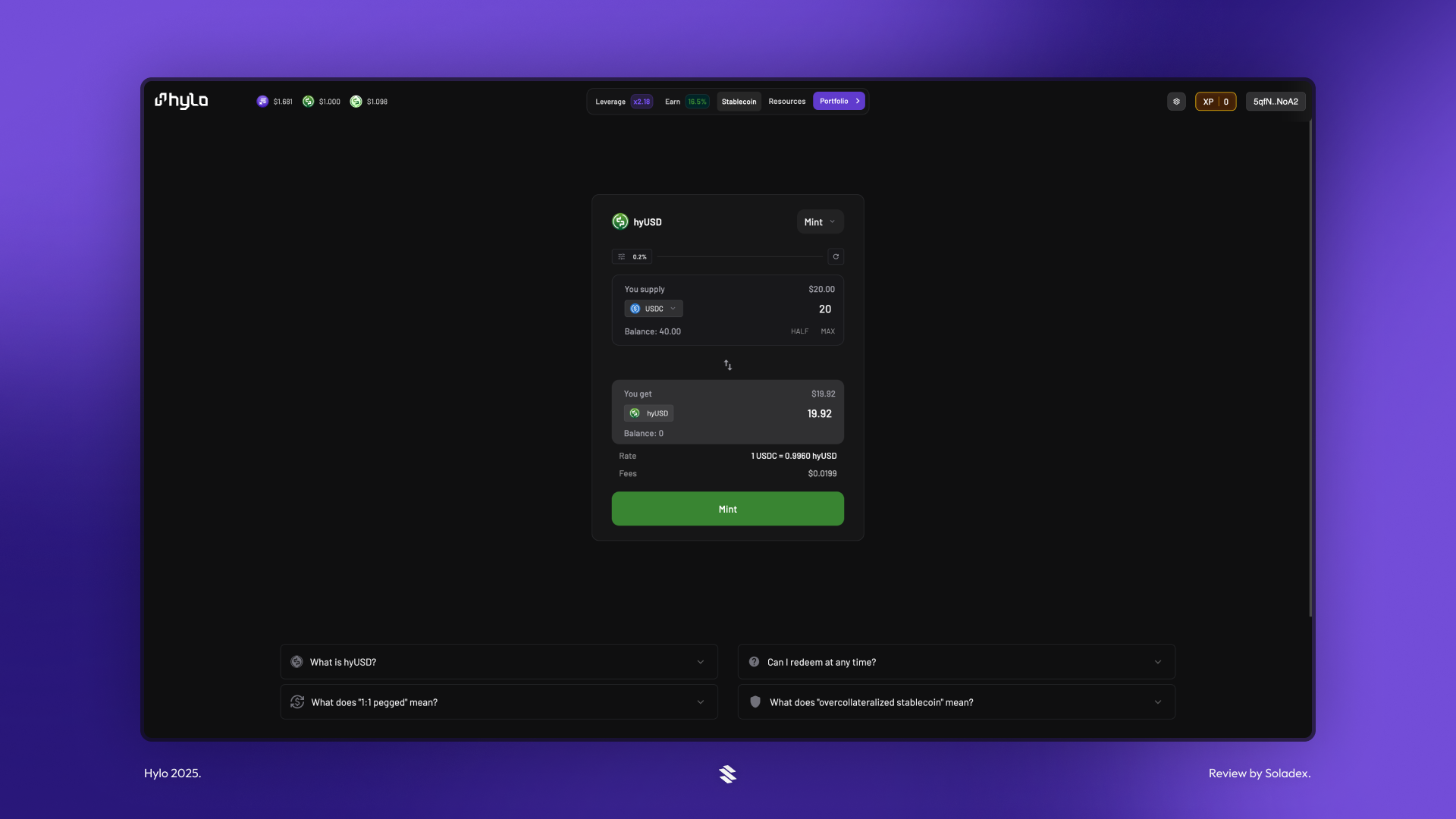
Portfolio
In most DeFi applications, the portfolio section serves as the central hub where users track their assets, positions, and overall portfolio value. Hylo follows this familiar structure but adds tailored insights for its ecosystem. Within the portfolio, users can easily view the status of their holdings, including the current APY earned on sHYUSD and the countdown to their next payout. This gives every user a clear view into both the growth of their holdings and the timing of rewards.
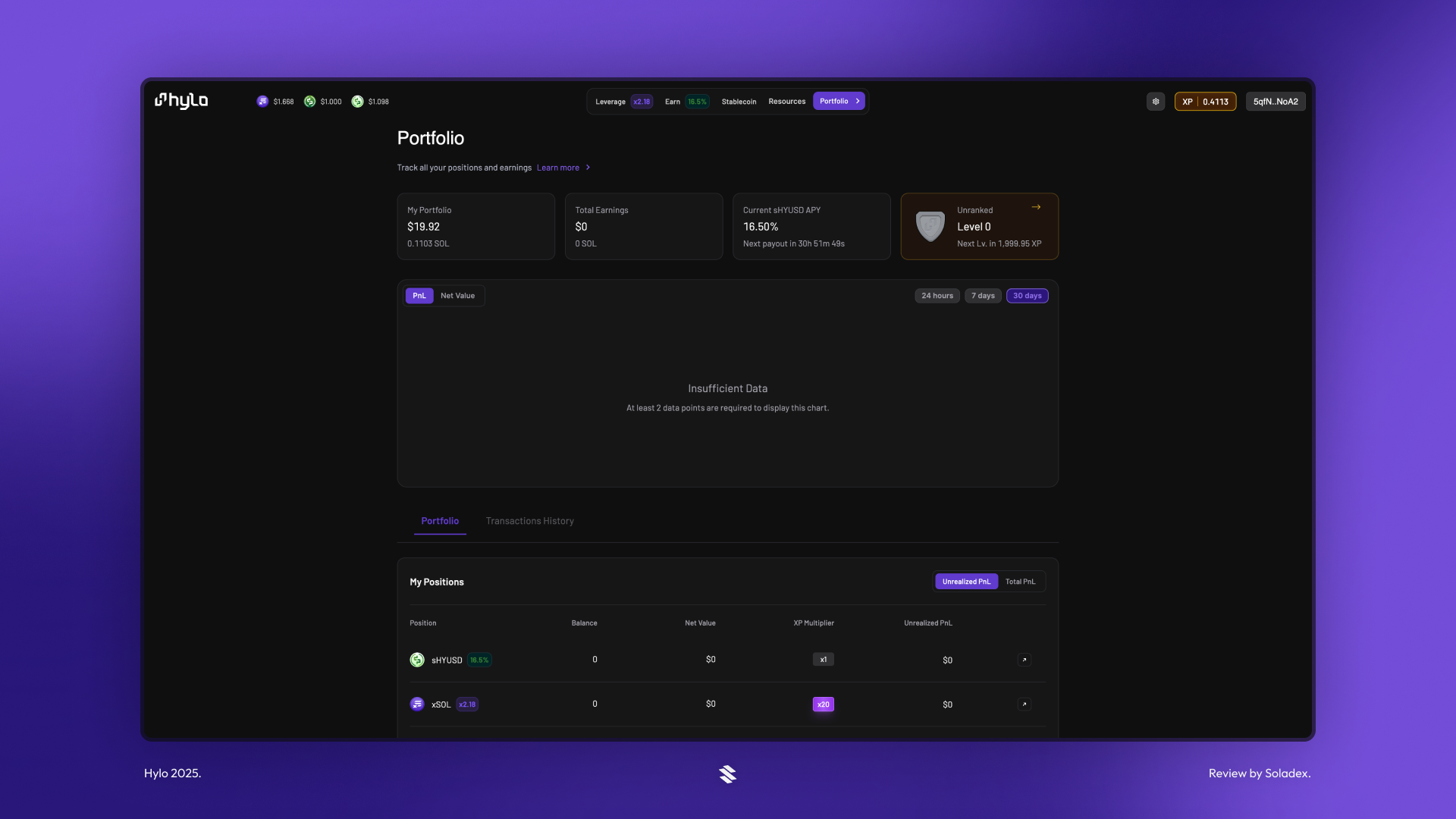
Risk Management
Hylo’s risk management system is built around the collateral ratio (CR), which measures the value of the assets backing hyUSD against the total supply. A CR above 150% signals strong health, while anything below 100% exposes hyUSD to the full volatility of SOL. This undermines its stability. To prevent this, Hylo uses two stability modes. When the CR drops below 150%, the protocol adjusts minting and redemption fees to discourage actions that weaken the ratio and encourage those that strengthen it.
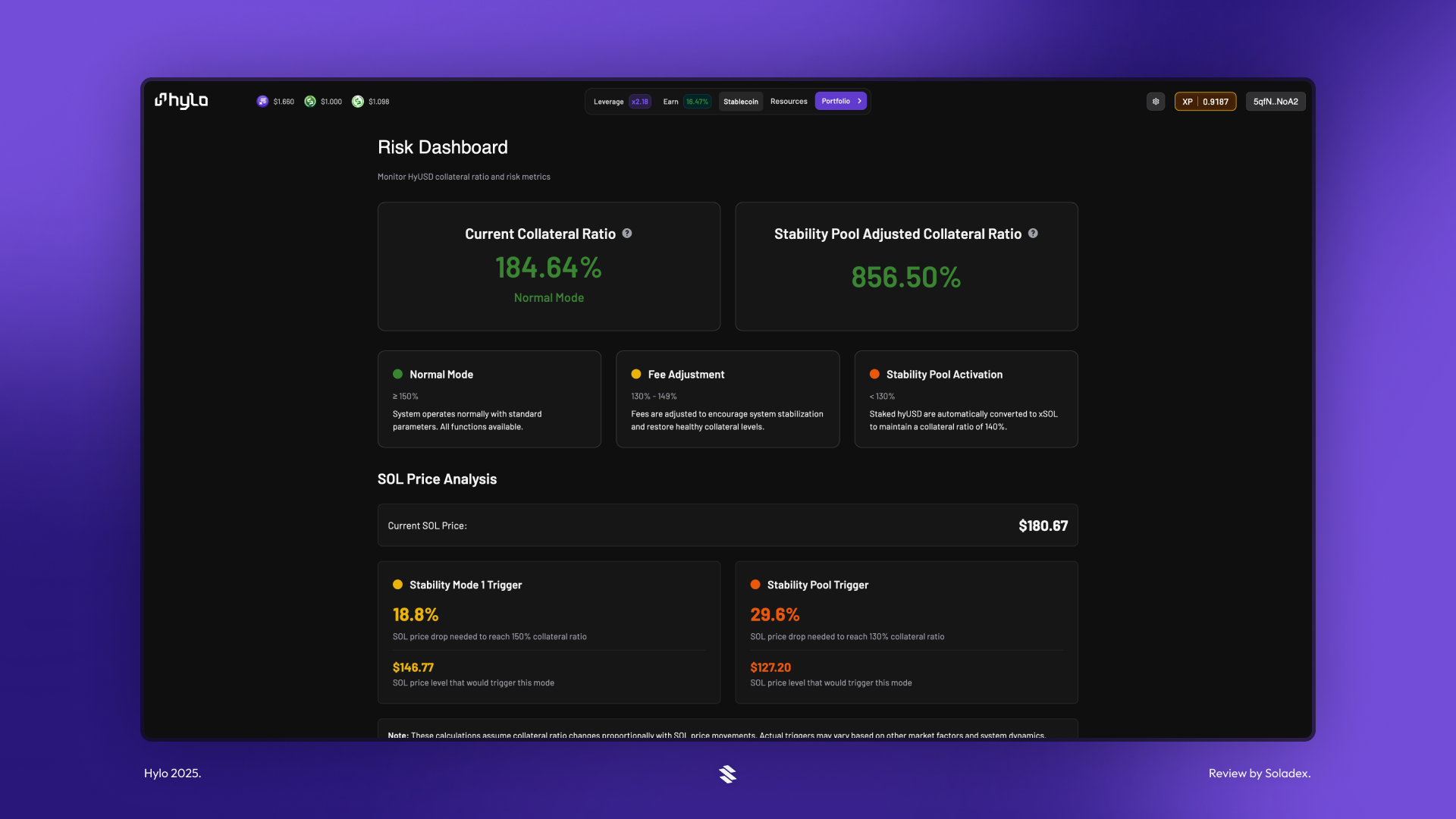
If the CR falls further, below 130%, the system takes stronger measures by activating the stability pool. In this stage, staked hyUSD is automatically converted into xSOL, which both reduces the hyUSD supply and increases collateral value to help the CR recover. While stability pool participants face the risk of their deposits being swapped during turbulence, they are compensated with higher yields in normal conditions.
Protocol Stats
In the Resources section, Hylo provides users with the current metrics of the protocol, such as the revenue earned, the total value locked, and the amount of circulating/minted hyUSD stablecoin.
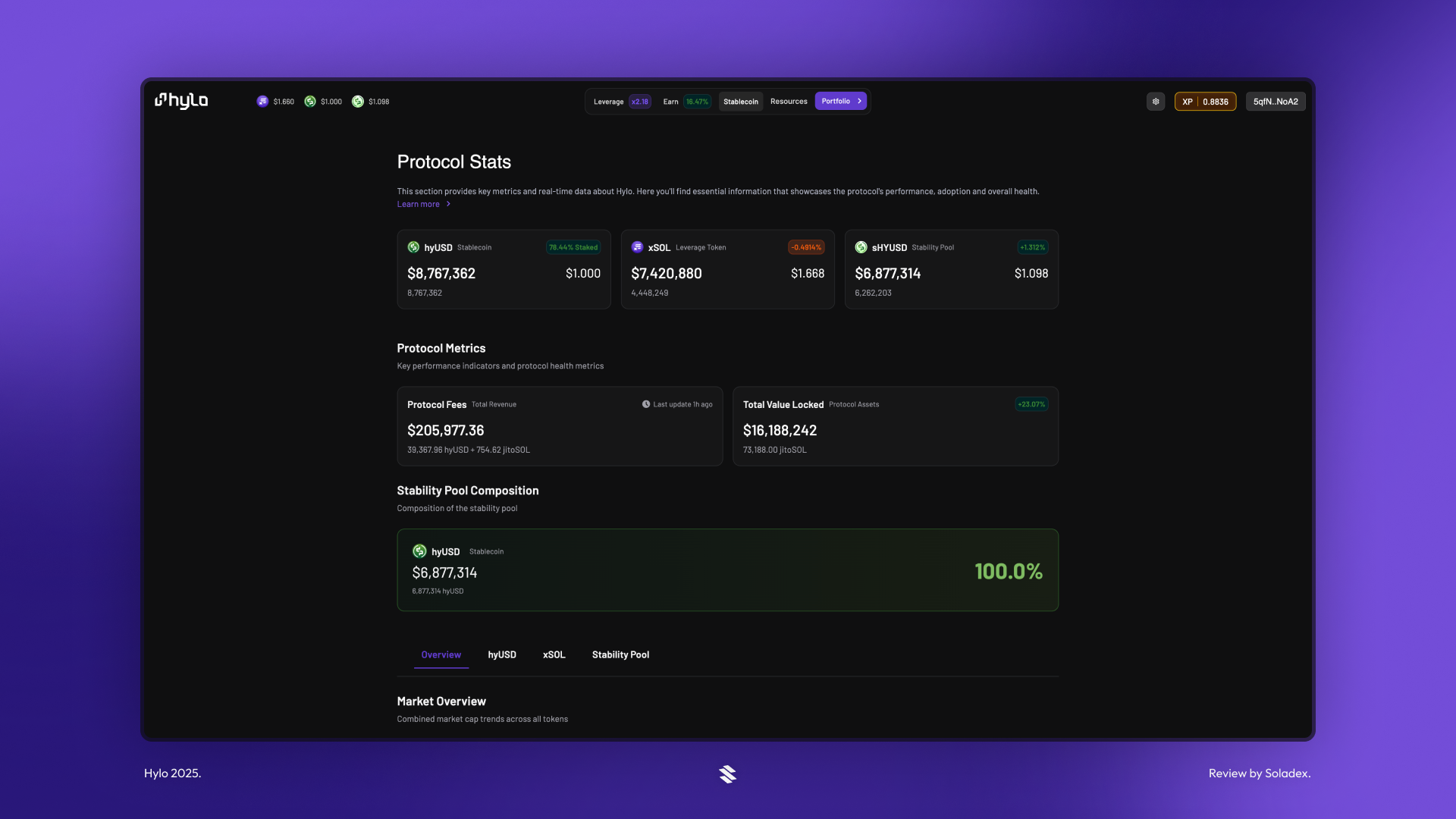
Conclusion
Hylo brings together stablecoin utility, yield generation, and careful risk management into one DeFi protocol built on Solana. With hyUSD providing a transparent and collateral-backed stablecoin, sHYUSD offering steady yield, and xSOL giving users a way to access leveraged exposure, the system covers a wide range of use cases.




